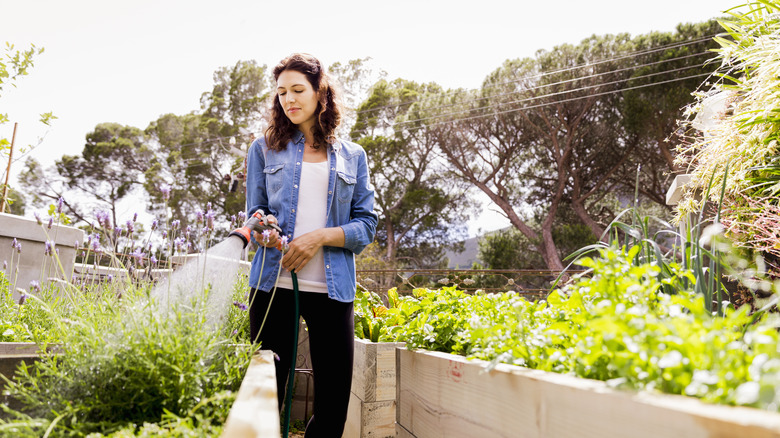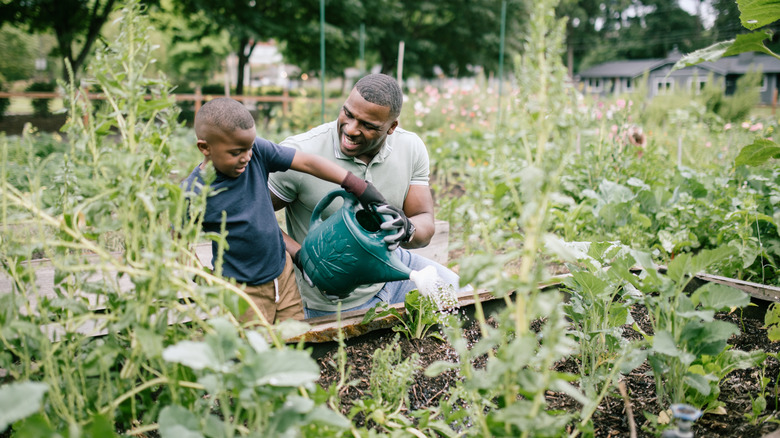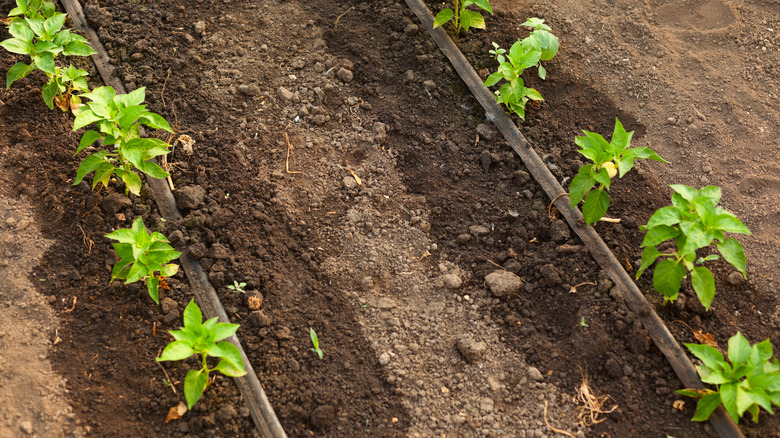The Best Methods For Watering Your Raised Garden Bed
Watering plays a vital role in the success of any garden, and raised garden beds offer numerous benefits for plant growth. With improved drainage and soil structure, raised beds require specific watering techniques to ensure optimal moisture levels. Prior to planting, enrich the soil with organic matter such as compost or well-rotted manure to improve water retention. Amending the soil helps to create a healthy, moisture-retentive environment for plant roots, ensuring the success of your garden no matter which method of watering you choose. For raised gardens, hand watering, drip irrigation, soaker hoses, and olla pots are all great methods for hydrating your plants.
The frequency and timing of watering depend on a number of factors, including individual plant needs, soil conditions, weather patterns, and the season. Strike a balance between providing adequate moisture and overwatering. Avoid dry conditions by mulching the topsoil of the garden bed with straw, woodchips, dried grass, or shredded leaves. Monitor the moisture levels by checking the soil's moisture content with your finger or using a moisture meter. It's generally better to water deeply and less frequently to encourage expansive root growth.
Hand watering
Using a watering can to hand water plants in a raised garden bed provides a gardener with the most control in hydrating their garden. Opt for a watering can with a shower-like nozzle to provide your garden with a gentle spray to imitate the rain. Pour the water slowly and evenly, allowing it to soak into the soil around the roots. Avoid splashing water onto the leaves, as this can lead to plant diseases, burning, and increased evaporation. Water until you see it penetrate the soil, sinking deep enough to reach all of the roots. Hand watering with a can also provides an intimate touch, allowing you to assess the needs of each plant and provide targeted hydration.
To hand water plants with a handheld spray nozzle, connect the nozzle to a garden hose and ensure the water flow is set to a moderate level to avoid damaging the plants. Stand near the plants and direct the spray towards the base of each one, aiming to reach the root zone. Move the nozzle gently and slowly, allowing the water to penetrate the soil, and remember to emulate the same pressure of rainfall. Pay attention to the moisture level of the soil and avoid overwatering by monitoring the amount of water applied to each plant. Keep the foliage dry to minimize the risk of fungal diseases, so aim the spray primarily at the soil around the plants.
Low-maintenance watering
For gardeners who want a more hands-free approach, drip irrigation and soaker hoses are great options that can cover a lot of space with minimal effort. For both methods, attach the hose to an outdoor spigot and run it along the garden bed, being careful not to disturb any foliage or fruit. Once your hose is in place, simply turn it on. Both drip irrigation and soaker hoses allow the water to soak directly into the soil, hydrating the roots of your plants, minimizing water waste, and preventing diseases by avoiding plant foliage. The main difference between them, though, is that drip irrigation hoses emit water from evenly spaced holes along their length, which is great for tomatoes, grapes, and onions, while a soaker hose oozes water, which is better for quick-growing vegetables like radishes and lettuce.
Originating both from China and North Africa, olla pots are a great way to provide low-maintenance irrigation to your garden. Simply bury terracotta pots every two to three feet in your raised garden bed near your plants, fill them with water, and place terracotta drip trays over the top to prevent evaporation. The porous clay walls will slowly release water to your nearby plants as needed. Check the pots a few times per week and refill as needed. Olla pots serve as a wonderful way to water responsibly and prevent roots from drying out, producing luscious crops all season long.



